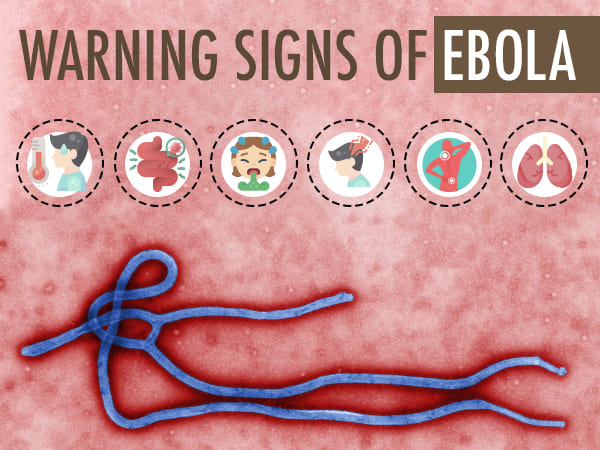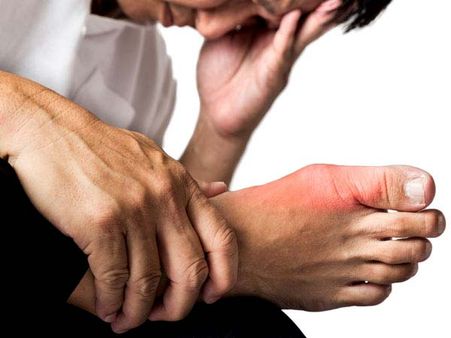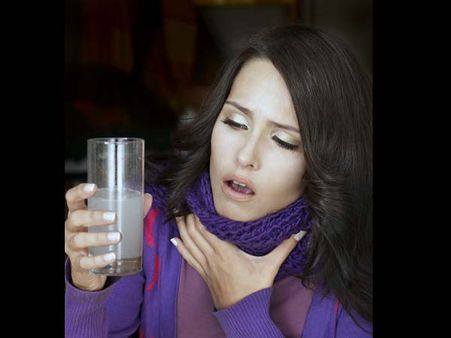Just In
- 10 min ago

- 46 min ago

- 1 hr ago

- 5 hrs ago

Don't Miss
- News
 Zero Shadow Day In Bengaluru, See When It's Occurring Today!
Zero Shadow Day In Bengaluru, See When It's Occurring Today! - Movies
 Aavesham OTT Release Date And Platform: Find Out When And Where To Watch Fahadh Faasil's Movie Online
Aavesham OTT Release Date And Platform: Find Out When And Where To Watch Fahadh Faasil's Movie Online - Sports
 IPL 2024: Noise Levels Peaked When MS Dhoni Hit Last-Ball 4 in CSK vs LSG Match
IPL 2024: Noise Levels Peaked When MS Dhoni Hit Last-Ball 4 in CSK vs LSG Match - Automobiles
 Kia Carens Earns Mixed Safety Ratings Amidst Growing Popularity In India
Kia Carens Earns Mixed Safety Ratings Amidst Growing Popularity In India - Finance
 Okay Play India Posts 12.79% Revenue Growth In Q4 After 1:10 Stock Split Approval
Okay Play India Posts 12.79% Revenue Growth In Q4 After 1:10 Stock Split Approval - Education
 Karnataka SSLC Class 10 Result, Tentative Date, How and Where to Check KSEAB Result 2024
Karnataka SSLC Class 10 Result, Tentative Date, How and Where to Check KSEAB Result 2024 - Travel
 Fly in Luxury: 10 Ways to Get Free Flight Upgrades
Fly in Luxury: 10 Ways to Get Free Flight Upgrades - Technology
 Realme Narzo 70 & Narzo 70x Launching Today in India: Check Price, Specs, Live Stream Details
Realme Narzo 70 & Narzo 70x Launching Today in India: Check Price, Specs, Live Stream Details
15 Warning Signs And Symptoms Of Ebola Virus Disease
Ebola or Ebola Virus Disease (EVD) is a serious and deadly disease that originated and caused an epidemic in the sub-Saharan African regions. The disease is caused by an Ebola virus that belongs to the Filoviridae family. Ebola is one among several virus types which are known to cause haemorrhagic fevers, a group of symptoms which are life-threatening.

Ebola is a zoonotic disease as it can get transmitted from infected animals such as fruit bats, monkey or chimpanzee to humans. The virus then spreads quickly from one person to another through infected body fluids or contaminated clothes or needles.
Currently, there's no licensed vaccine available that can prevent Ebola. However, several experimental treatment methods and supportive cares are available which are effective in reducing the symptoms up to certain levels.

Signs And Symptoms Of Ebola Virus
The symptoms of Ebola start appearing in between 2-21 days after getting infected by the virus. At first, the symptoms look similar to flu or malaria fever, but soon, they start progressing and get life-threatening.
Take a look at the warning signs and symptoms of Ebola.

1. Fever
Ebola viruses can cause severe forms of viral haemorrhagic fever known as Ebola haemorrhagic fever. It is commonly the first symptom of EVD recognised by a rise in the body temperature of an individual. [1]


2. Chills
Chills include feelings of coldness accompanied by shaking and shivering. In some conditions, chills arise without fever. However, in Ebola, chills usually arise after the occurrence of fever.

3. Sore throat
The percentage of occurrence of sore throat as an initial symptom of EVD is 56-58 per cent. Several reports say that the Ebola virus causes painful throat, like a sensation of dry rope or ball inserted in the throat region. [2]


4. Severe headache
Headache is common in flu or the common cold, but severe headache can be a warning sign of Ebola. According to the CDC, in the 2014 outbreak of Ebola in West Africa, the severe headache was among the most reported symptoms.[3]

5. Malaise
Malaise is referred to as a feeling of discomfort, restlessness or uneasiness. The malaise in Ebola usually comes after the primary symptoms such as fever, chills or headache.

6. Lack of appetite
Ebola haemorrhagic fever usually affects all the body organs including the gastrointestinal system. This results in problems like lack of appetite in which the desire to eat is reduced leading to weakness or fatigue.

7. Muscle and joint pain
Muscle and joint pain are not only regarded as early symptoms of Ebola but are also post-treatment symptoms. A study says that many patients who have survived Ebola often complain about musculoskeletal symptoms such as joint and muscle pain for a year or even more. [4]


8. Breathing difficulties
A study talks about the pulmonary involvement of the Ebola virus, suggesting that the virus may infect the respiratory system of a person. Scientists have found some evidence during the 2013-2016 Ebola outbreak that the virus shed in the lungs lead to a risk of aerosol transmission, similar to that of COVID-19. This results in breathing difficulties, chest pain and other respiratory illnesses. [5]

9. Stomach pain
Stomach pain is one among the gastrointestinal symptoms that usually follow a patient on 4-6 day after the onset of the illness. This can lead to hypovolemia (loss of bodily fluid or reduced blood volume) which may further lead to shock. [6]


10. Fatigue and weakness
Ebola patients often feel intense fatigue and weakness, a symptom that makes a person extremly tired or lethargic, both physically and mentally. Fatigue and weakness usually follow due to vomiting, diarrhoea or loss of appetite.

11. Red eyes
EVD can affect the quality of life of a person by leading to ocular diseases. Red eyes, photophobia or eye pain is common among EVD survivors. This may sometime lead to vision loss or other vision impairment. [7]

12. Diarrhoea (may be bloody) and vomiting
Common gastrointestinal problems in Ebola include diarrhoea (70 per cent) and vomiting and nausea (60 per cent). These conditions can be life-threatening if not treated on time. The reason behind blood in the stool or vomit is still unclear, but it can be due to mucosal breakdown or bleeding of the gastro tract. [8]

13. Unexplained haemorrhaging
Haemorrhaging refers to blood loss or bleeding. Haemorrhaging is the serious complication in EVD and the exact cause behind it is unknown. However, several theories say that haemorrhaging is due to platelet dysfunction in a serious ill Ebola patient. Possible bleeding can occur from ears, eyes, nose or rectum leading to the death of a person.

14. Rashes on the skin
Ebola is also characterised by diffuse maculopapular rashes (both flat and raised skin bumps). The Ebola virus enters the body not only through bodily fluids but also through breaks on the skin. The immune system then produces inflammatory cytokines to combat the infection, and as a response to cytokines proteins, rashes occur typically during the 5-7 days of the infection. [9]

15. Difficulties in swallowing
Ebola can affect the respiratory system and may cause problems in swallowing foods. Also, due to severe cough or sore throat, the windpipe gets inflamed and may cause this problem. The long duration of this symptom may result increase the risk of death of a person.
-
 disorders cureWHO Publishes First Ebola Treatment Guideline
disorders cureWHO Publishes First Ebola Treatment Guideline -
 disorders cureFirst Death Confirmed In UK From New Outbreak; Know About Lassa Fever And Its Symptoms, Risks And Treatment
disorders cureFirst Death Confirmed In UK From New Outbreak; Know About Lassa Fever And Its Symptoms, Risks And Treatment -
 disorders cureEverything You Need To Know About Fever, Dengue Fever, Ebola, Chikungunya And Typhoid Fever
disorders cureEverything You Need To Know About Fever, Dengue Fever, Ebola, Chikungunya And Typhoid Fever -
 disorders cureDisease X, A New Disease Similar To COVID-19 And Ebola: Everything You Need To Know
disorders cureDisease X, A New Disease Similar To COVID-19 And Ebola: Everything You Need To Know -
 disorders cureChapare Virus: Human-To-Human Transmission Of Deadly Ebola-like Virus Confirmed
disorders cureChapare Virus: Human-To-Human Transmission Of Deadly Ebola-like Virus Confirmed -
 wellnessWorld Toilet Day 2020: Infections You Can Catch From A Dirty Toilet
wellnessWorld Toilet Day 2020: Infections You Can Catch From A Dirty Toilet -
 wellnessCan Ebola Virus Disease Be Prevented?
wellnessCan Ebola Virus Disease Be Prevented? -
 newsEbola Outbreak In Congo, WHO Declares Global Health Emergency
newsEbola Outbreak In Congo, WHO Declares Global Health Emergency -
 wellnessBangalore: Zika Virus Found In Mosquito; Karnataka Health Dept Issues Advisory, Prevention Tips
wellnessBangalore: Zika Virus Found In Mosquito; Karnataka Health Dept Issues Advisory, Prevention Tips -
 healthNipah Virus Outbreak In Kerala: Should You Cut Down Fruit Trees At Home? Which Fruit Trees Are Risky?
healthNipah Virus Outbreak In Kerala: Should You Cut Down Fruit Trees At Home? Which Fruit Trees Are Risky? -
 healthHow To Know If You Have Eye Flu? Steps To Look For Signs
healthHow To Know If You Have Eye Flu? Steps To Look For Signs -
 healthMyths vs Facts: You Must Bathe After Attending A Funeral
healthMyths vs Facts: You Must Bathe After Attending A Funeral


 Click it and Unblock the Notifications
Click it and Unblock the Notifications






